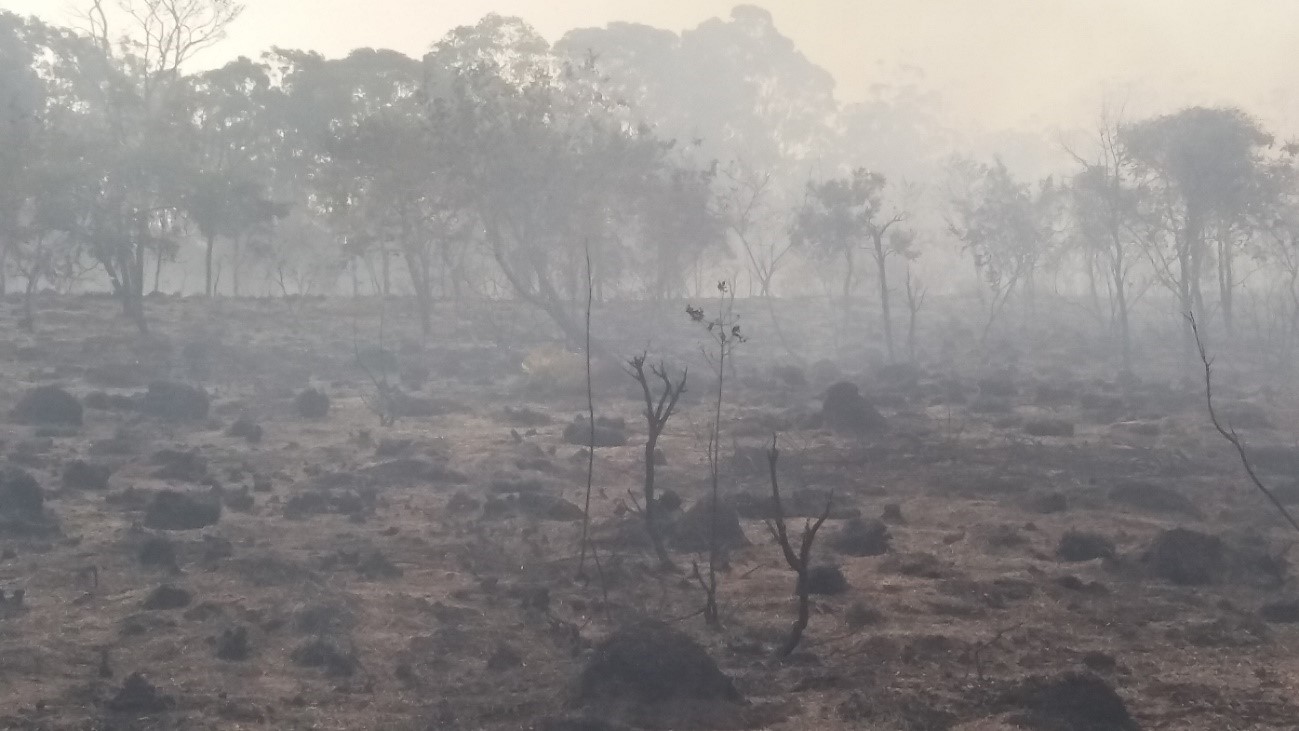


View of the Cerrado after a bushfire (photo: Rosana Marta Kolb/UNESP)
Published on 08/05/2024
By José Tadeu Arantes | Agência FAPESP – For thousands of years, plants have evolved in the presence of wildfires in the Cerrado, Brazil’s savanna-like biome. Scientists at São Paulo State University (UNESP) studied the effect of smoke on seed germination for 44 plant species typical of the Cerrado, as reported in an article published in Plant Ecology, where they stress that their findings could be used to optimize the restoration of degraded areas.
The study was conducted by PhD candidate Gabriel Schmidt Teixeira Motta under the supervision of Rosana Marta Kolb, a professor at UNESP.
“Previous studies focused on the effect of smoke on only a few species. This one is the most comprehensive analysis of the kind regarding the Cerrado. Gabriel investigated the effect of smoke on germination for 44 species in the herbaceous-shrub stratum, involving grasses, forbs [herbaceous plants other than grasses], subshrubs and shrubs,” Kolb said.
Smoke contains hundreds of substances, some of which help germination while others hinder it, depending on the species. The most well-known are karrikins – germination and growth regulators found in the smoke of burning plant material. Karrikins interact with the plants’ hormones, promoting germination of certain seeds and inhibiting the development of others.
“Research using gaseous smoke involves variables that are hard to replicate, so instead we used ‘smoke water’, which can be bought off the shelf. It produces an effect equivalent to that of rain after a bushfire, and its action can easily be reproduced by other researchers,” Kolb explained, adding that the smoke-water concentrations used in her laboratory were 2.5% and 5.0%.
Practical applications
The study focused on the individual effects of these two concentrations of smoke water on the germination of the 44 species without taking into account the influence of management strategies. Nevertheless, the practical applications are obvious: seeds that respond well can be sown in areas that have undergone the action of fire or areas degraded by livestock raising and other uses that have been previously treated with smoke water in the right concentration. “Our conclusion was that not just plants typical of savannas but also some wetland species that haven’t evolved in the presence of frequent intense fire will respond well to treatment with smoke,” Kolb said.
Germination increased in response to smoke in 14 of the 44 species studied (32%), with variations depending on the concentration. On the other hand, germination decreased significantly in four species (9%), especially at the higher concentration (5%). Grasses germinated faster in response to smoke, particularly Ctenium polystachyum and Saccharum villosum, which displayed a substantial reduction in average germination time after treatment with smoke water.
“The results show that smoke can act as a strong stimulant of germination in some Cerrado species, offering a competitive advantage in the post-fire environment. The study suggests that responses to smoke are highly specific to each species and vary in accordance with the form of growth and the type of plant community,” Kolb said.
Besides Motta and Kolb, Natashi Pilon and Alessandra Fidelis participated in the study, which was supported by FAPESP via the project “Fire-adapted seed traits in Cerrado species”, for which Fidelis was principal investigator, and a postdoctoral scholarship awarded to Pilon.
The article “Smoke effects on the germination of Cerrado species” is at: link.springer.com/article/10.1007/s11258-024-01427-4.
Source: https://agencia.fapesp.br/52404